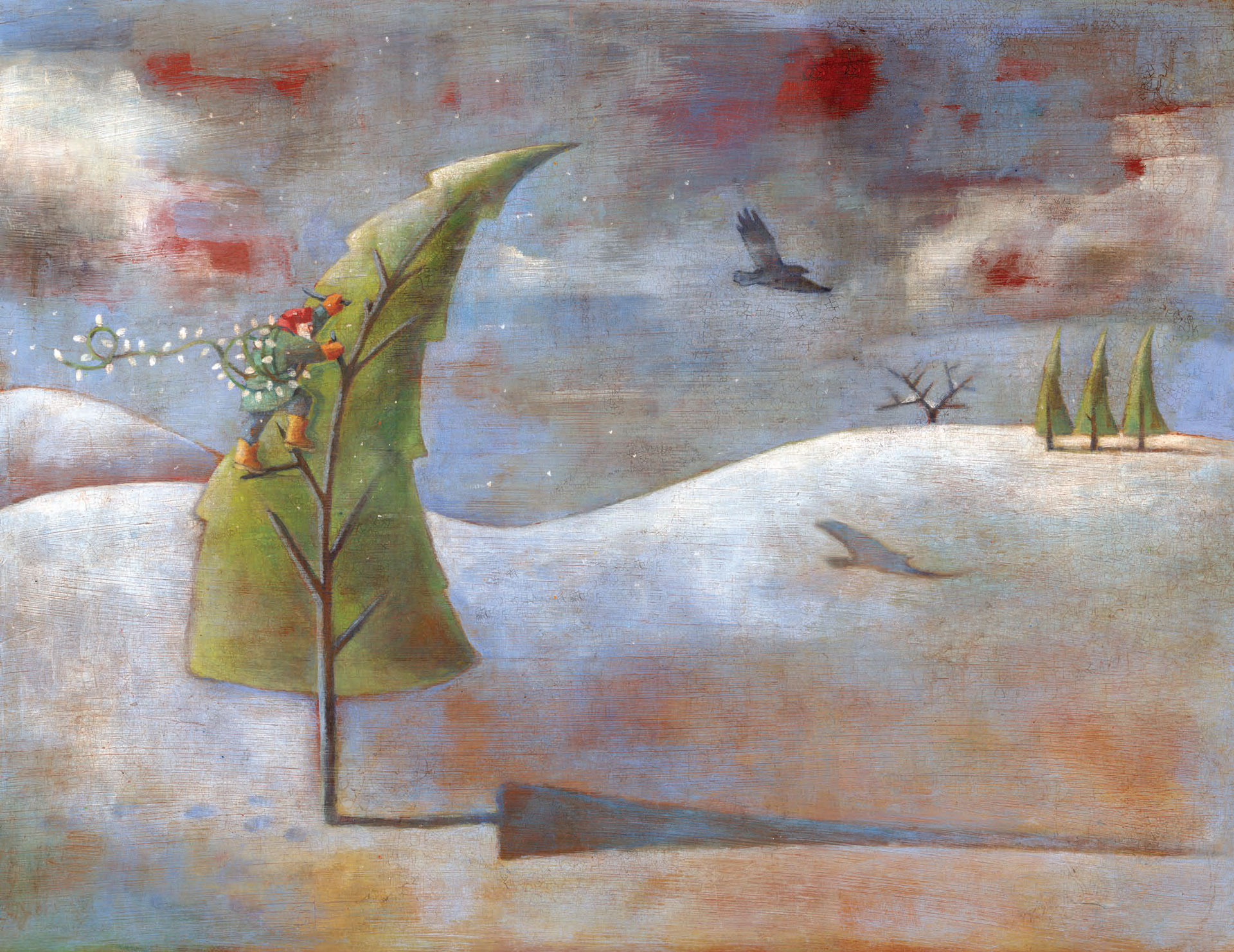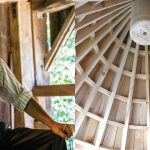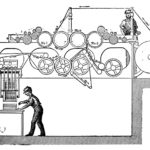
THE NOVEMBER WIND picks up strength and sways the old pine tree back and forth. A solo figure in dark winter clothing clings to a branch near the top, looking like a sailor in a crow’s nest on a storm-lashed ship.
It is the first weekend of Advent, and just as he has done every year, the man is about to string hundreds of Christmas lights into the boughs of the huge, ancient pine that stands in front of his house. Earlier, as he was starting his climb, a neighbour walking his dog looked up from the sidewalk and wished him good luck, the way the soldiers in the Great War wished their mates luck just before they went over the top of the trench. The neighbours all know about his annual ritual of the lights; they smile with something that might be a mix of wonder and pity.
Another familiar feature of the season is the email correspondence about whether his children and their families will be home for the holidays. It has been a while, he and his wife remind them, as they always do. But his kids have their own holiday traditions to nurture, their own children to tend to. The stress of packing them into cars or airplanes at the busiest time of the year is exhausting just to think of. It’s funny: when you are raising your children it seems some days will never end. After, you wonder where they all went.
He doubts they would even remember that it was because of them that he began his Christmas light stringing chore.
When they first moved into their house in the mid-nineties, the kids insisted that the giant pine tree in the front yard would make a cool place for Christmas lights. All you have to do, they told him, is climb up to the top and string them on the branches all the way down. They never wavered in their belief that he could do it. That’s probably the reason he accepted the challenge, even though he knew he was sentencing himself to annual floggings by branches and impaling by twigs as he attempted to breach the heights of the crotchety old pine. If you’re a father, there’s a time in their lives when your children believe you can do anything.
The sky overhead is turning steel-wool grey in the late afternoon, and the clouds that sit low over the hills are looking swollen and bruised. I’ve left it too late in the day, he thinks, laughing at himself. I’ll be lucky if I can see what I’m doing in twenty minutes. But it has to be done today; a storm is coming and his tree will be unclimbable if it is covered in snow. It will become part of the winter’s forest; accessible only to owls and cardinals.
The hills of Northumberland seem to entice and trap snow. Although the squalls are stronger near the lake, in places like Cobourg or Brighton, the more serious, more permanent snow prefers the places farther north, where it falls and settles gently but steadfastly. It is the best snow he has ever known. When what falls in the big city has been trampled slush-brown by boots and traffic and washed away down storm drains, Northumberland snow always stays for Christmas. If the Inuit had a word for it, they might call it lovable.
Through a gap in the branches he can see into his house: the family room is lit by a single lamp beside his chair, and the yellow light spilling onto the ground outside the window promises warmth and comfort after his work is finished. He can remember a full score of Christmases in that family room: the tree, the children, the glow from the fireplace. He knows his wife is inside somewhere, working, cooking, or napping – she barely notices his tree climbing exploits anymore and knows he will come inside when he is done, not before.
He strains further up the tree. His strategy, refined over decades, is to work his way down, pushing the Christmas lights out onto the branches as he goes. His body is swaddled in the many strings of lights he is carrying. A sharp twig pokes him in the scalp and the wind swirls motes of dead bark into his eyes. “I have definitely seen poems lovelier than you,” he snarls at his tree. As if in response, a medium-sized branch snaps off in his hand. “Are they all so brittle this year?” he wonders, looking down at the one he is standing on. The tree’s limbs – like his own – are not as strong or supple as they once were. Each year his ascent wears both of them down a bit more. He reaches suddenly for a higher branch and an old shoulder injury wakens and groans in protest.
The large pine has begun to look worse for wear in the past few years. Old age plus decades of weathering have caused many of its branches to wither and die, collapsing into themselves like arthritic hands. Its needles are now sparse. “If Charlie Brown’s tree had survived to senility,” he thinks, “this is what it would look like. I should get rid of it and plant a newer, healthier, fuller tree.” But history and tradition grip him as firmly as he grips the rough bark of the branches.
His daughter climbed into this tree as a child to read her first books. She would sit cradled in one special bough, away from everything except the worlds created by Enid Blyton, Louisa May Alcott, L. M. Montgomery. Now she writes her own books. His son’s second-floor bedroom window looked out through the branches, and the glow from the Christmas lights shone inward every December from the days he was a preschooler until the year he moved to the other side of the country to begin his career. His wife still gardens in its shade, growing more and more things every summer, even after all these years. Stringing the tree with its lights is part of the weft of the family fabric. Like so many liturgies of life, this one has become ingrained and does not invite change. And like life, the light-stringing doesn’t become any easier over time; but over time you become more accepting of how difficult it is.
It’s possible he dreamed that someday his children would take over the task when they became old enough, and when he became too old. That time came and went, and the mantle was somehow never passed, so the project remained his. In addition to the vestigial value of what he’s doing, he actually feels a sense of duty to the scraggly tree itself, as one would to a perennial relative who’s unappealing to look at, difficult to love, but impossible to imagine not there.
And so he climbs, ducking, weaving, and squeezing himself through the limbs and needles. His surroundings grow darker and more disorienting by the minute. The branches seem to assume a new configuration every year, always keeping him guessing where to step, where to hold on. The laws of entropy govern his project. Strings of lights he had meticulously disentangled on the ground have entwined themselves together again like mating eels. With one frozen hand wrapped around the tree trunk he uses the other to try to unravel them, assisted by his teeth. When you are up a tree, you will use any available resource to help you stay there.
It is a long way down. He looks out over his property. Beyond the roof of his house the Trent River flows. The river has a life cycle of its own, repeated through the seasons. In spring, after the ice melts, it rushes past with a frightening intensity, as if it knows it is utterly unstoppable and can go where it wants. When the cold weather comes, the banks grow shoulders of snow-covered ice, although the moving river never allows a total freezing of its path.
Looking farther into the distance, he can see the snow approaching from the west, blurring the overlapping lines of the Trent Hills until everything is a swirling veil of hornet’s-nest grey. “About half an hour before it gets here,” he thinks. Time to finish up before the snow makes the footing treacherous. “If I fall, I will probably hit about fifteen branches on the way down before landing in a crumpled heap on the ground below.” He tightens his grip, the action sending a new ache through his fingers.
Why not, many have asked him, simply leave the lights up there in the tree all year round? He has a stock answer ready: to him there is something uncompromisingly seasonal about Christmas lights. They would look out of place whipping and snapping around in a July thunderstorm. What’s more, he’s always liked the way the light-stringing ritual bookends his holiday season. “As soon as they go up I can start humming carols,” he tells his neighbours, “and when they come down I can forget about the Christmas past and start looking forward to the New Year.” They stare as if to say that this is not a good enough reason, and maybe it isn’t anymore.
“This may be the last year I do the lights,” he told his son over the phone the other day.
A laugh. “Impossible. You’ll be doing those lights till you’re a hundred.” But his son may have heard something in his father’s voice, a tone different from all the years when he’d said the same thing. And so this year for the first time since the grandchildren were babies, everyone will come. Calls have been made between the siblings, flights booked, transportation arranged. He and his wife have already pulled apart the dining room table to insert the extra leaf, dug out the toboggan, made sure Netflix is working. They’ll be here.
Gradually he works his way down the tree. The strings are woven through and around the branches, and every light has a place by the time he sets foot on earth again. Almost on cue, white flakes start to fall, so big and heavy and thick that they coat everything in seconds.
He walks through the snow-dappled gloom to plug the joined light strings into an extension cord, then goes down the driveway onto the road to see the results. The lights curl upward around the pine boughs like wisps of coloured smoke, reaching into the cascade of snowflakes above and casting a warm glow onto the whitening ground below. His tree looks beautiful. Whatever majesty it once possessed is restored.
He and his wife will spend the coming evenings peering out the front window into the December darkness, watching for the movement of headlights through the forest and listening for the snow-muffled sound of tires on the driveway. Waiting for their family to follow the tree that lights their way home, like a star.
Story by:
Chris Cameron
Illustration by:
Shelagh Armstrong

